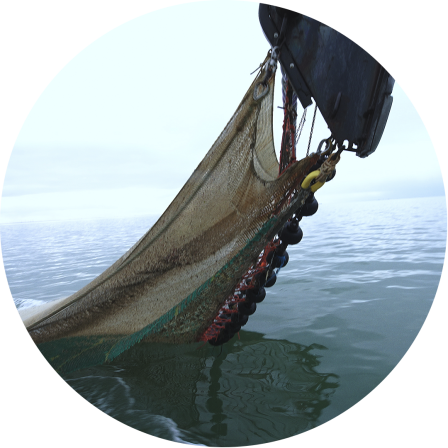
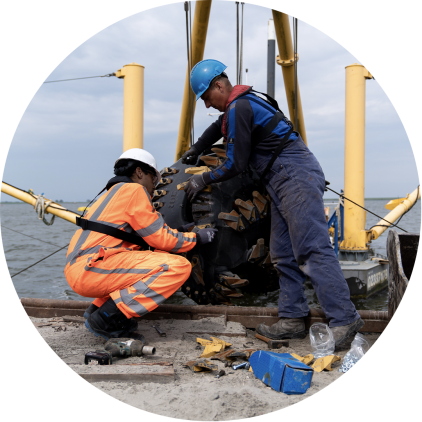
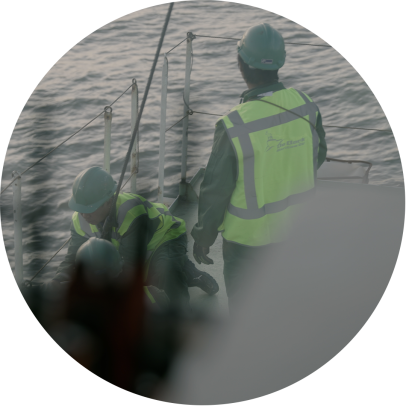
Keeping abreast of the latest news is crucial, especially in a dynamic and high-risk environment like the maritime sector. By being well-informed about recent developments, regulations and best practices, employees and companies can learn from each other, improve safety and work more efficiently.
Click and read on to learn more about the latest safety guidelines, innovative techniques and essential measures that contribute to a safe working environment at sea. Stay prepared and well-informed with our insights.
"The increase in workload is a real problem"
Photo for illustrative purposes
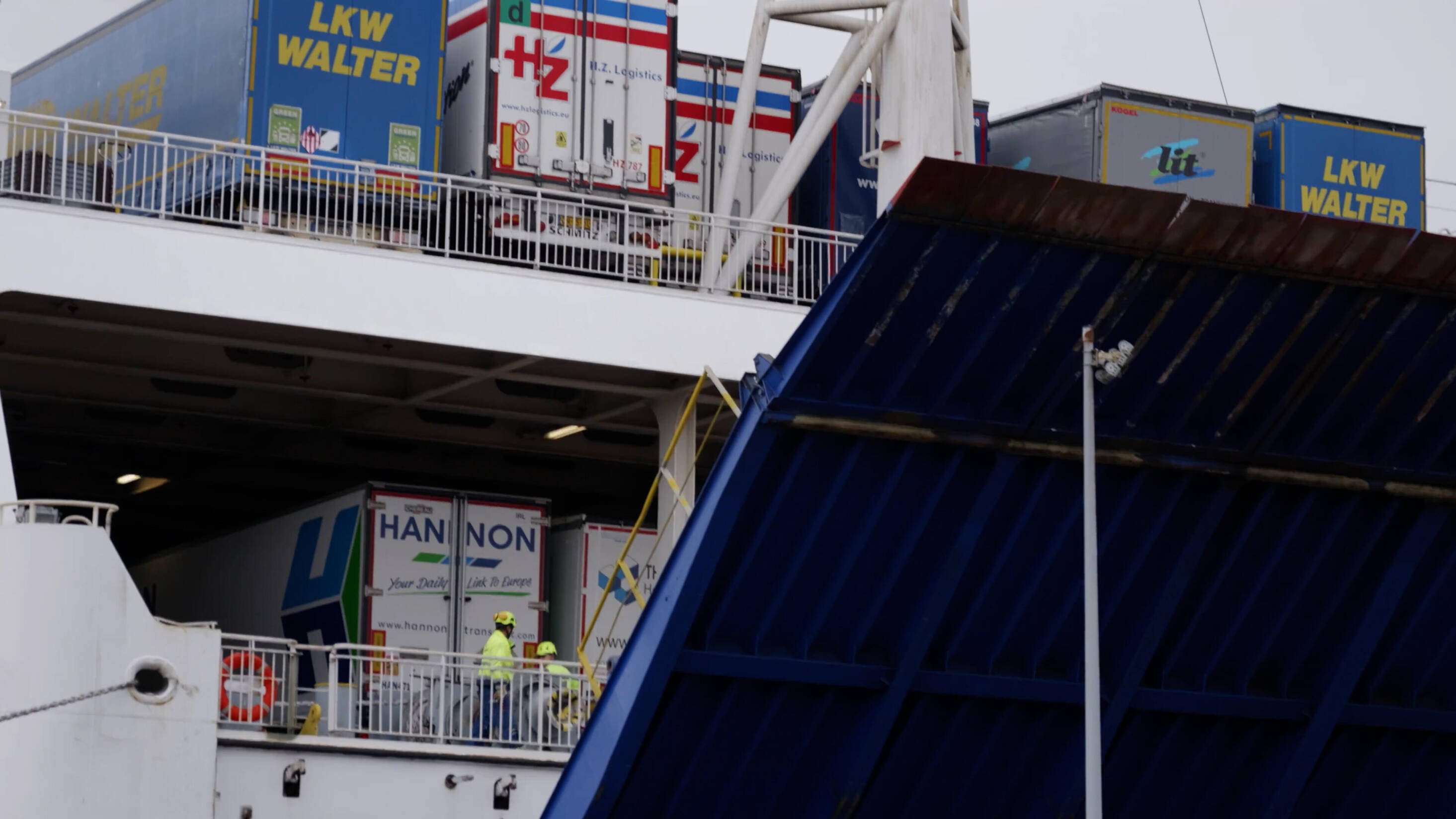
The report made a number of recommendations for terminals, including a PIN code per ship for access through the gates, public jetties that can be open 24/7, electric buses on site for transporting crew and actively informing crew upon arrival of the ship about how to access the site. At the presentation of the report, harbour master Mateyo said: 'Let's take this as a starting point to move forward and actually improve the situation for seafarers.
According to Rasser, the recommendations have not yet been adopted by the terminals. “I really hope that the situation changes, because I sometimes meet seafarers who have been on board for 1.5 years. These distressing situations really must stop. I will continue to raise the alarm for as long as necessary.”
Good terminals
Rasser also wants to mention the good terminals in Amsterdam. Everything is well organised at the scrap terminals HKS, Maja Scrap and the energy terminal Eurotank. “The people who work there have often been at sea themselves. They understand how important shore leave is and support seafarers. I'm very happy about that.”
Port of Amsterdam
A team from the Port of Amsterdam investigated how shore leave is organised on behalf of harbour master Milembe Mateyo. The report was presented in July. It shows that 1 in 4 seafarers do not take any shore leave at all. Costs, unclear procedures and strict security are the main barriers. Officers are least likely to take shore leave; crew on offshore vessels and tankers take shore leave less often than other types of vessels.
On board
Rasser himself boards ships almost daily, often via the terminals. “The Koperen Ploeg wants to ferry me across for free, but I save that for when it's really urgent.” The sailors are always happy to see him. “They enjoy having visitors, just chatting about how things are going.”
He points out that smarter planning and digitisation are putting pressure on shore leave for seafarers. 'The increase in workload is a real problem. Automation means there are fewer crew members on board. When they arrive in port, they have sometimes already been at sea for 45 days. Once at the quay, an enormous amount has to be done in a few days, such as inspections, stocking up on provisions, bringing spare parts on board and checks. The crew often has very little time to go ashore. If the terminals then make it impossible for them to do so, it breaks my heart."
Difficult terminals
According to the minister, the terminals where the problems are greatest in Amsterdam are Cargill, Bunge, Rietlanden and Hes. At the latter terminal, one section is easily accessible, but the extension of another quay means there is no access to the shore.
Rasser also criticises the fact that contact with these terminals from on board is virtually impossible. Schuttevaer notes that Cargill and Bunge do not clearly display email addresses in their contact details online and that it takes a long time to find a telephone number. Schuttevaer contacted all terminals for a response, but received no reply. At one terminal, the telephone connection was broken several times before someone answered. Another terminal provided an email address by telephone. Schuttevaer contacted all four terminals by email, but so far none of them have responded.
Photo for illustrative purposes
Leon Rasser is committed to seafarers. © Photo Wouter Zaalberg
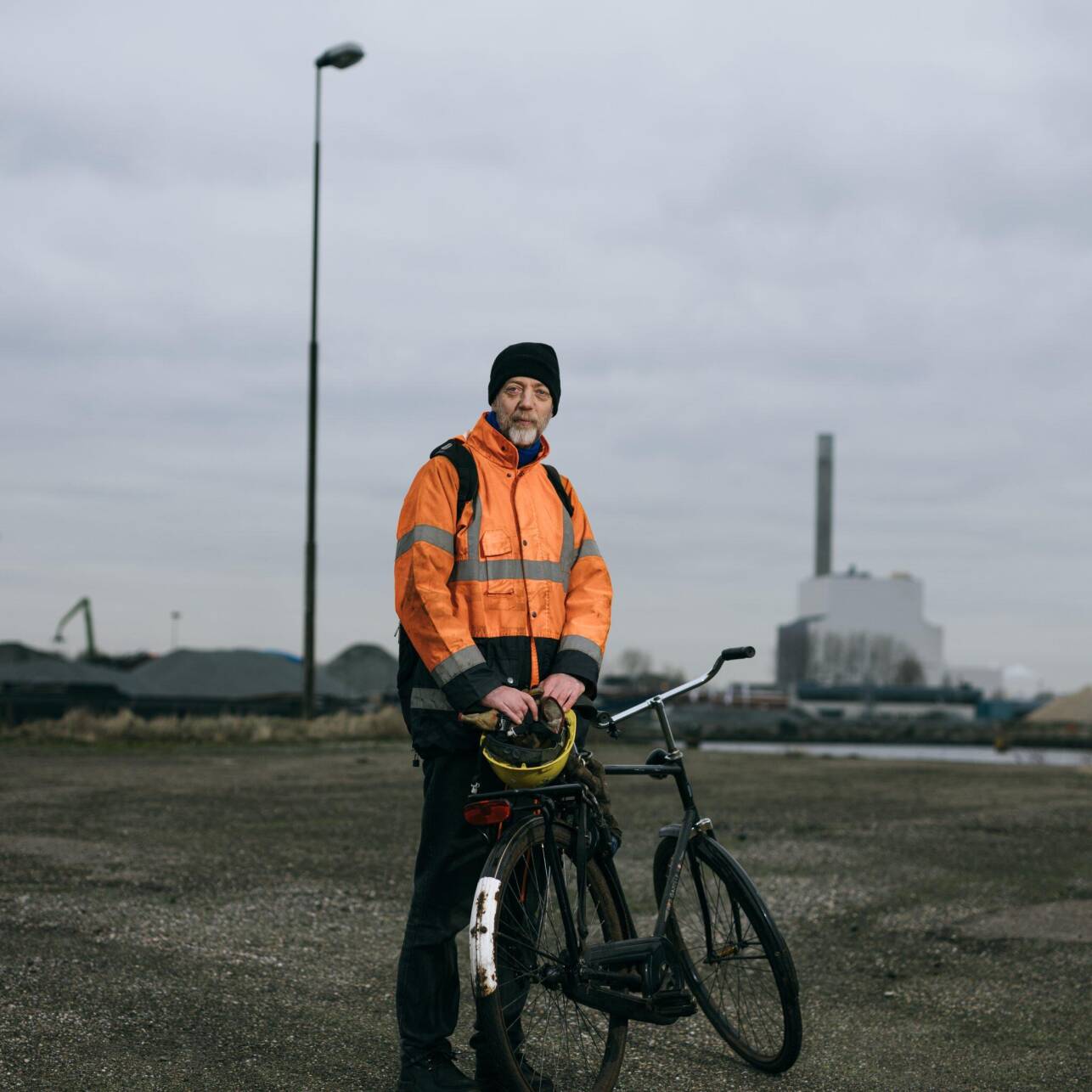
Merchant navy chaplain Leon Rasser is seriously concerned about the welfare of seafarers in the port of Amsterdam. He visits seagoing vessels in Amsterdam almost daily to offer Christian spiritual support to seafarers and is hearing more and more often that they are not allowed to disembark at various terminals. “We have a third fewer visitors to our Seamen's Home than ten years ago. That is purely because the terminals are prohibiting seafarers from disembarking.”
Rasser has been working as a spiritual counsellor in the port of Amsterdam through the Seamen's Home for more than 25 years. “Over the past ten years, I have seen the number of terminals, especially after takeovers by large international companies, stop their access to shore. This really is at the expense of the sailors” shore leave.'
The terminals often have closed gates in the evenings and at weekends, preventing sailors from leaving the premises. According to Rasser, sailors are sometimes simply forbidden to disembark on foot. “It's often a real hassle. They are told they have to order a boat, but that's not always possible.” Only De Koperen Ploeg ferries seafarers by boat on behalf of the Port Authority, doing so about 15 times a month.
The Port of Amsterdam in figures
Every year, there are approximately 92,000 seafarers on ships in the Port of Amsterdam. In 2024, there were 4,600 calls by seagoing vessels in Amsterdam, with approximately 18 to 25 crew members on board each ship. In 2024, the seamen's home received 8,700 visiting seafarers.
Rasser hears from the crew that terminals often cite safety on the premises as the reason why they are not allowed to disembark. That is a fallacy, says Rasser. ‘In all the time I have been working in the port, there has only been one accident involving a crew member being hit by a vehicle at a terminal. These seafarers visit ports all over the world, so they really do know how to walk safely around a site.’

Photo for illustrative purposes
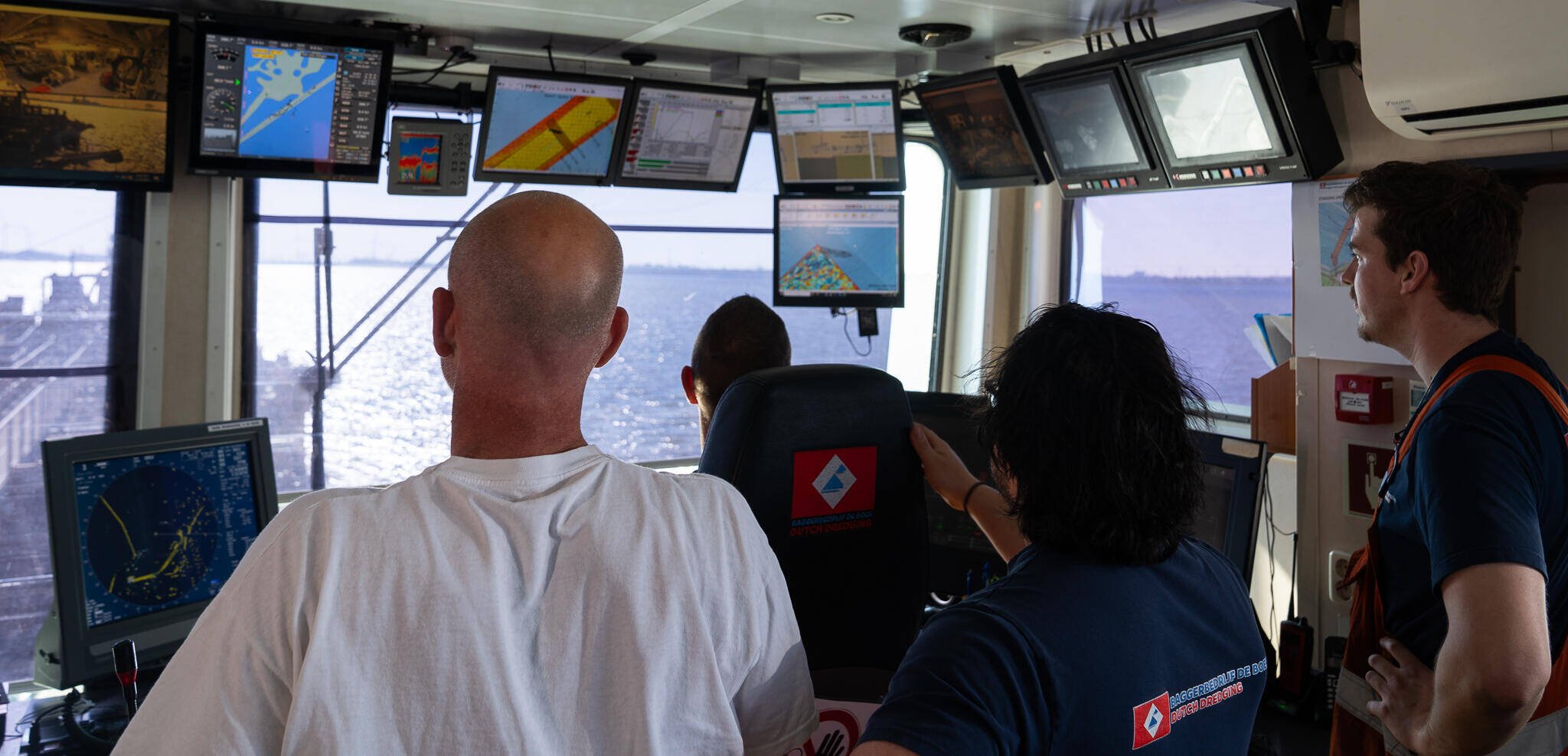
Sustainable employability: a shared responsibility
The study paints a nuanced picture. Hydraulic engineers generally have a positive view of their health and safety, but also see clear risks for the future. Wear and tear, stress and the impact of long absences require structural attention.
The solution does not lie solely with employers, but requires a joint effort from organisations, managers and employees. The O&O fund therefore emphasises the importance of sustainable employability: staying healthy and energetic, having sufficient knowledge, being motivated and committed, finding a balance between work and private life, and working safely.
To support this, the fund is developing toolboxes with information, scans and workshops on healthy working, work pressure, motivation, skills and sustainable employability discussions.
The sector's motto seems clear: hydraulic engineers want to continue, but in a healthy, safe manner and with prospects for the future.
Work-life balance: missing the home front
The work-life balance is rated 6.7 on average. Many employees are used to long periods of absence, but admit that it remains difficult for their families. Informal care is almost impossible to combine with work, and poor internet connections make it difficult to stay in touch.
In addition, jet lag and long travel times result in shorter leave periods. Last-minute changes to schedules lead to frustration. According to the respondents, employers should offer more regular schedules, better internet connections and the option to work fewer hours.
Photo for illustrative purposes
Work pressure: ‘We cost a tonne a day’
The average rating for work pressure is 6. Employees under the age of 40 experience slightly less stress (5.7) than their older colleagues (6.2). Nevertheless, many see stress as an integral part of their profession. ‘We cost a tonne a day, every hour of idling costs money,’ said one of the interviewees.
Nevertheless, there are clear stress factors: poor organisation, long shifts, work-life imbalance and understaffing. A third of employees do nothing to combat stress. Those who do seek relaxation, exercise or discuss problems with managers.
When asked what employers can do, respondents often give the same answer: more appreciation and personal attention. Greater autonomy, better schedules and extra staff would also reduce the pressure.
Safety: high awareness, but rules are restrictive
Respondents gave safety a score of 7.6. Safety awareness is high: 90 per cent always wear protective equipment and 84 per cent challenge colleagues on unsafe behaviour. However, 30 per cent admit that they do not always follow all instructions.
The main bottlenecks are time pressure, fatigue, language barriers and inexperienced crew. There is also criticism of bureaucracy: ‘Too many safety rules and training courses, which means it's no longer done,’ they say.
Proposals to improve safety are concrete: more practical information, better protective equipment, and pairing experienced staff with newcomers.
Photo for illustrative purposes
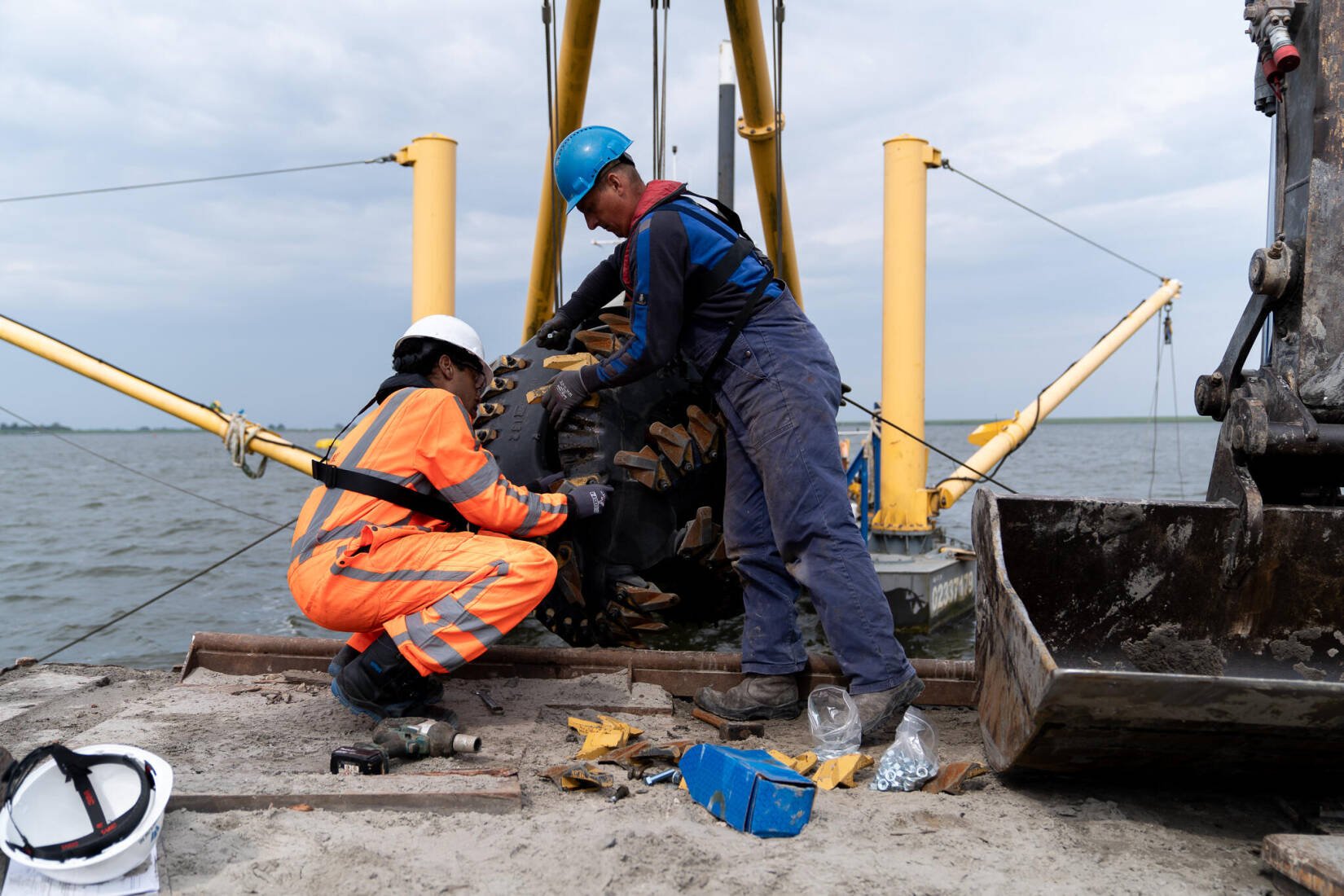
Work in hydraulic engineering is heavy, intensive and requires a strong mentality. This is evident from a recent study by the O&O Fund for Hydraulic Engineering into the physical and mental health of sailing personnel. The fund wants to support employees in reaching retirement in a healthy, motivated and competent state.
Survey among seafaring personnel
The study was conducted by a-advies and consisted of an online questionnaire and 27 interviews. A total of 83 employees started the questionnaire, 59 of whom completed it in full. The group consisted of 44 per cent engineers and 56 per cent nautical personnel such as captains, helmsmen and barge masters.
The aim was to gain insight into the bottlenecks experienced by seafarers in terms of health, safety and work pressure, and to discover what improvements they believe are necessary.
Physical health: complaints due to wear and tear
On average, hydraulic engineers rate their physical health at 7.3. Younger employees give themselves a 7.8, while their older colleagues do not exceed a 6.9. Fatigue, back problems and pain in joints and muscles are particularly mentioned.
The bottlenecks are clear: heavy lifting, long shifts, noise, night shifts, unhealthy eating habits and tiring travel. ‘You can't do this your whole life,’ says one interviewee. ‘Everyone suffers from wear and tear. If you work on a cutter your whole life, you might as well sit in a wheelchair when you retire.’
Civil engineers try to stay healthy by exercising, not smoking and eating healthier. However, many believe that employers also have a responsibility. Healthy food on board, extra days off and better travel facilities are often mentioned. The cook plays a key role in this. A suggestion that comes up regularly is to offer cooks a course in healthy cooking.

Photo for illustrative purposes
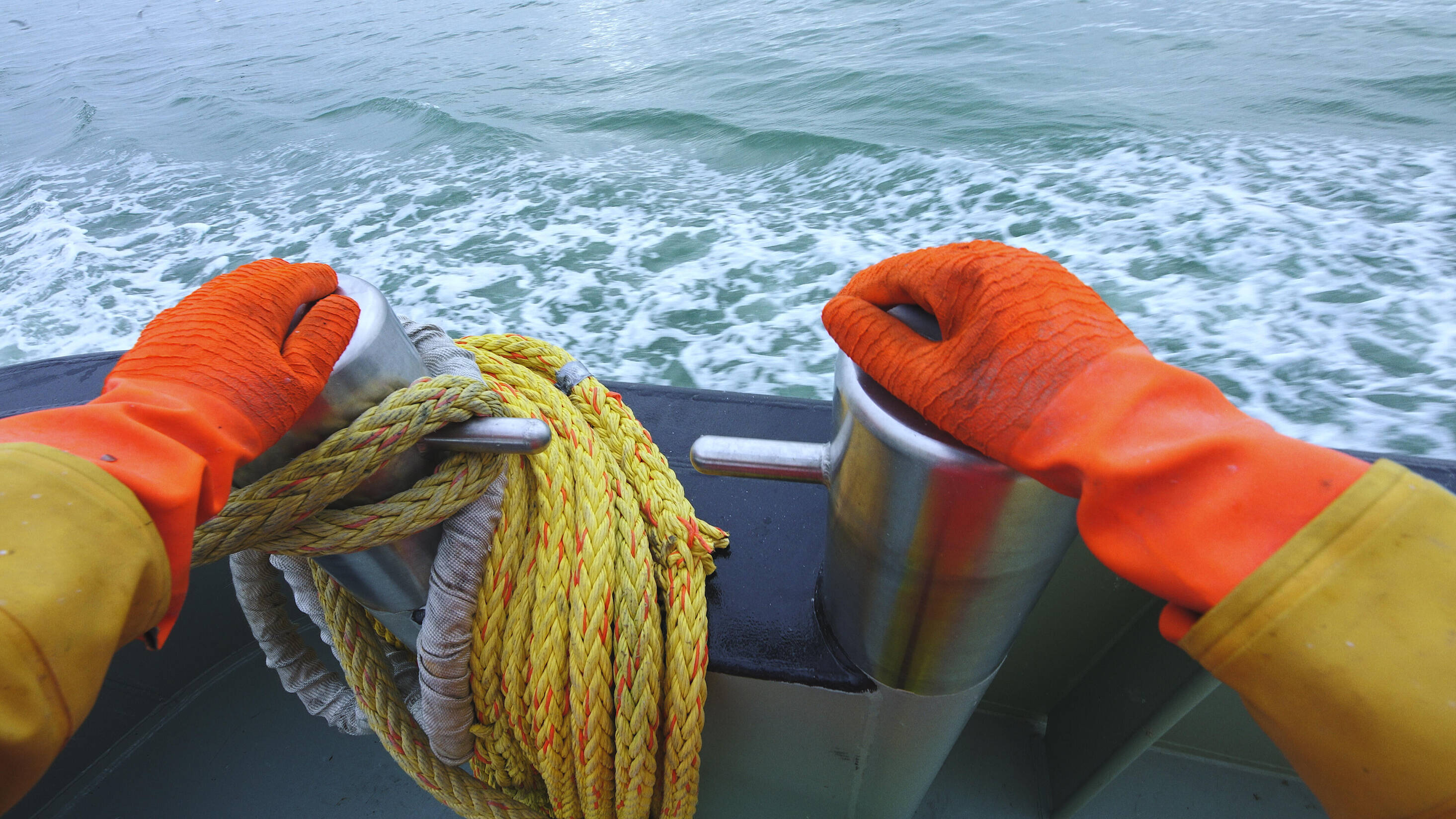
Photo for illustrative purposes
Living with one leg
On the basis of all this, the judge arrived at a distribution of liability of two-thirds for the skipper and ship owner and one-third for the crew member involved. However, on the basis of fairness, there is room for correction. The man, who was 26 at the time of the accident, has to continue living and working with one leg, which has lasting consequences, including financial ones. After adjusting for these factors, the judge ruled that the former crew member should bear 20% of the damages himself and that 80% should be borne by the skipper and the ship owner.
Serious consequences
The skipper and crew member had been working together for about six years. The action that went wrong was in itself commonplace and simple. However, this does not alter the fact that there can be serious consequences if things go wrong, and that the skipper must ensure that this does not happen. The fact that he looked behind him into the wheelhouse rather than at the crew member while sailing away means that there could not have been good communication between the two. This is also confirmed by the fact that the skipper did not hear the crew member shouting. Nor did the skipper check and ask whether the rope that had to be thrown off had actually been brought completely on board.
According to the judge, the skipper therefore failed to take a number of precautions that he should have taken. He made mistakes, the judge ruled, and therefore the fault of the ship is clear and the company, as the ship's owner, is liable. However, the crew member could also have done more himself: he could have discussed with the skipper that, in his opinion, the rope was not properly secured, or he could have taken steps to change this himself. He could also have taken up a different position on the deck, further away from the rope. According to the judge, the man had the opportunity to choose his own safety, but he failed to take advantage of it.
The court in Rotterdam. © Photo image bank Rechtspraak

In a serious accident involving a rope on board a fishing vessel, a crew member's lower leg became so trapped that it was torn off. This was due to mistakes made by the skipper, although the crew member himself was not entirely blameless. What stands out in the judgment of the Rotterdam court is that the accident could easily have been prevented.
The accident occurred when the skipper wanted to move from the Noorderhaven in Den Oever to a bunker pontoon. When casting off, the crew member became trapped in a rope that the skipper had placed on the foredeck. The skipper was in the wheelhouse when the boat departed and did not see the accident happen because he was looking aft at the time to make sure he did not hit the boat behind him. The crew member tried to alert the skipper, but he did not hear him. The entrapment was therefore irreversible and the man lost his lower leg. He then spent some time in hospital and two and a half months in a rehabilitation centre. In total, his rehabilitation took nine months.
“Rushed and careless”
The court case that was eventually brought about this accident and its aftermath mainly concerned the question of who was at fault and to what extent. Such partial dispute proceedings are intended to facilitate the settlement of personal injury claims outside the courtroom.
According to the crew member who was seriously injured, the skipper had acted in a hurried, inattentive and careless manner. His communication was also said to have been inadequate and he did not take the correct safety measures. The skipper and the ship owner gave a different account of the course of events.
According to the judge, the witness hearings, an investigation report and a photograph do not provide clarity on many aspects of this case. Nevertheless, according to the judge, two things have been established. The secured part of the rope, which was attached to the front portside bow cleat, was loosened by the crew member. And he was leaning on his left knee when the accident happened.




Keeping abreast of the latest news is crucial, especially in a dynamic and high-risk environment like the maritime sector. By being well-informed about recent developments, regulations and best practices, employees and companies can learn from each other, improve safety and work more efficiently.
Click and read on to learn more about the latest safety guidelines, innovative techniques and essential measures that contribute to a safe working environment at sea. Stay prepared and well-informed with our insights.
"The increase in workload is a real problem"
The report made a number of recommendations for terminals, including a PIN code per ship for access through the gates, public jetties that can be open 24/7, electric buses on site for transporting crew and actively informing crew upon arrival of the ship about how to access the site. At the presentation of the report, harbour master Mateyo said: 'Let's take this as a starting point to move forward and actually improve the situation for seafarers.
According to Rasser, the recommendations have not yet been adopted by the terminals. “I really hope that the situation changes, because I sometimes meet seafarers who have been on board for 1.5 years. These distressing situations really must stop. I will continue to raise the alarm for as long as necessary.”
Photo for illustrative purposes
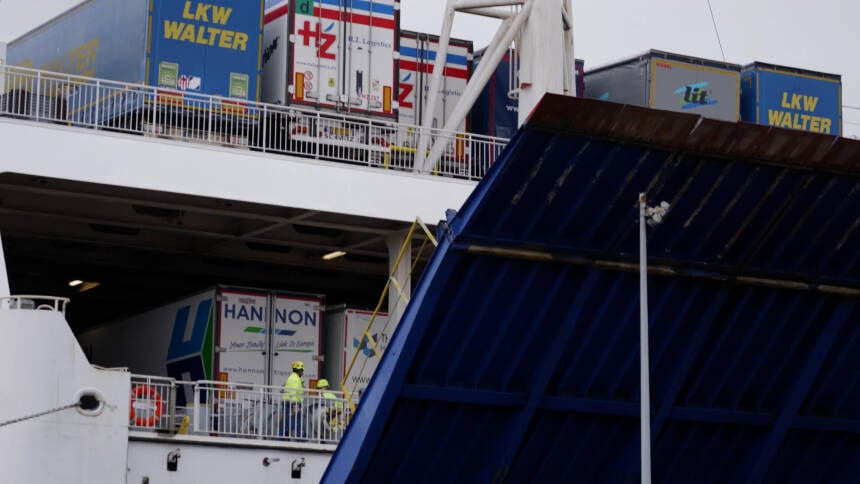
Good terminals
Rasser also wants to mention the good terminals in Amsterdam. Everything is well organised at the scrap terminals HKS, Maja Scrap and the energy terminal Eurotank. “The people who work there have often been at sea themselves. They understand how important shore leave is and support seafarers. I'm very happy about that.”
Port of Amsterdam
A team from the Port of Amsterdam investigated how shore leave is organised on behalf of harbour master Milembe Mateyo. The report was presented in July. It shows that 1 in 4 seafarers do not take any shore leave at all. Costs, unclear procedures and strict security are the main barriers. Officers are least likely to take shore leave; crew on offshore vessels and tankers take shore leave less often than other types of vessels.
On board
Rasser himself boards ships almost daily, often via the terminals. “The Koperen Ploeg wants to ferry me across for free, but I save that for when it's really urgent.” The sailors are always happy to see him. “They enjoy having visitors, just chatting about how things are going.”
He points out that smarter planning and digitisation are putting pressure on shore leave for seafarers. 'The increase in workload is a real problem. Automation means there are fewer crew members on board. When they arrive in port, they have sometimes already been at sea for 45 days. Once at the quay, an enormous amount has to be done in a few days, such as inspections, stocking up on provisions, bringing spare parts on board and checks. The crew often has very little time to go ashore. If the terminals then make it impossible for them to do so, it breaks my heart."
Difficult terminals
According to the minister, the terminals where the problems are greatest in Amsterdam are Cargill, Bunge, Rietlanden and Hes. At the latter terminal, one section is easily accessible, but the extension of another quay means there is no access to the shore.
Rasser also criticises the fact that contact with these terminals from on board is virtually impossible. Schuttevaer notes that Cargill and Bunge do not clearly display email addresses in their contact details online and that it takes a long time to find a telephone number. Schuttevaer contacted all terminals for a response, but received no reply. At one terminal, the telephone connection was broken several times before someone answered. Another terminal provided an email address by telephone. Schuttevaer contacted all four terminals by email, but so far none of them have responded.
Photo for illustrative purposes
Leon Rasser is committed to seafarers. © Photo Wouter Zaalberg
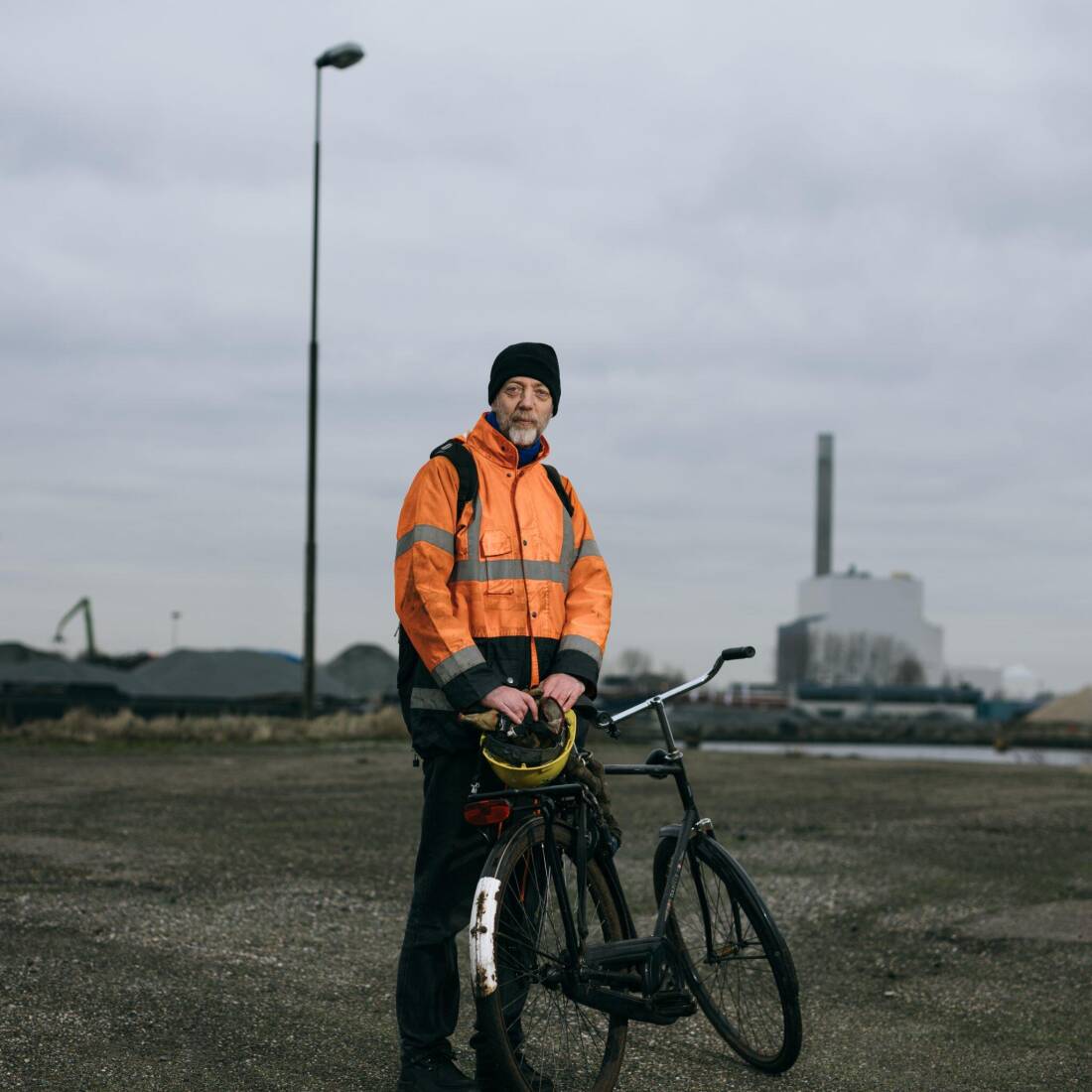
Merchant navy chaplain Leon Rasser is seriously concerned about the welfare of seafarers in the port of Amsterdam. He visits seagoing vessels in Amsterdam almost daily to offer Christian spiritual support to seafarers and is hearing more and more often that they are not allowed to disembark at various terminals. “We have a third fewer visitors to our Seamen's Home than ten years ago. That is purely because the terminals are prohibiting seafarers from disembarking.”
Rasser has been working as a spiritual counsellor in the port of Amsterdam through the Seamen's Home for more than 25 years. “Over the past ten years, I have seen the number of terminals, especially after takeovers by large international companies, stop their access to shore. This really is at the expense of the sailors” shore leave.'
The terminals often have closed gates in the evenings and at weekends, preventing sailors from leaving the premises. According to Rasser, sailors are sometimes simply forbidden to disembark on foot. “It's often a real hassle. They are told they have to order a boat, but that's not always possible.” Only De Koperen Ploeg ferries seafarers by boat on behalf of the Port Authority, doing so about 15 times a month.
The Port of Amsterdam in figures
Every year, there are approximately 92,000 seafarers on ships in the Port of Amsterdam. In 2024, there were 4,600 calls by seagoing vessels in Amsterdam, with approximately 18 to 25 crew members on board each ship. In 2024, the seamen's home received 8,700 visiting seafarers.
Rasser hears from the crew that terminals often cite safety on the premises as the reason why they are not allowed to disembark. That is a fallacy, says Rasser. ‘In all the time I have been working in the port, there has only been one accident involving a crew member being hit by a vehicle at a terminal. These seafarers visit ports all over the world, so they really do know how to walk safely around a site.’

Sustainable employability: a shared responsibility
The study paints a nuanced picture. Hydraulic engineers generally have a positive view of their health and safety, but also see clear risks for the future. Wear and tear, stress and the impact of long absences require structural attention.
The solution does not lie solely with employers, but requires a joint effort from organisations, managers and employees. The O&O fund therefore emphasises the importance of sustainable employability: staying healthy and energetic, having sufficient knowledge, being motivated and committed, finding a balance between work and private life, and working safely.
To support this, the fund is developing toolboxes with information, scans and workshops on healthy working, work pressure, motivation, skills and sustainable employability discussions.
The sector's motto seems clear: hydraulic engineers want to continue, but in a healthy, safe manner and with prospects for the future.
Photo for illustrative purposes
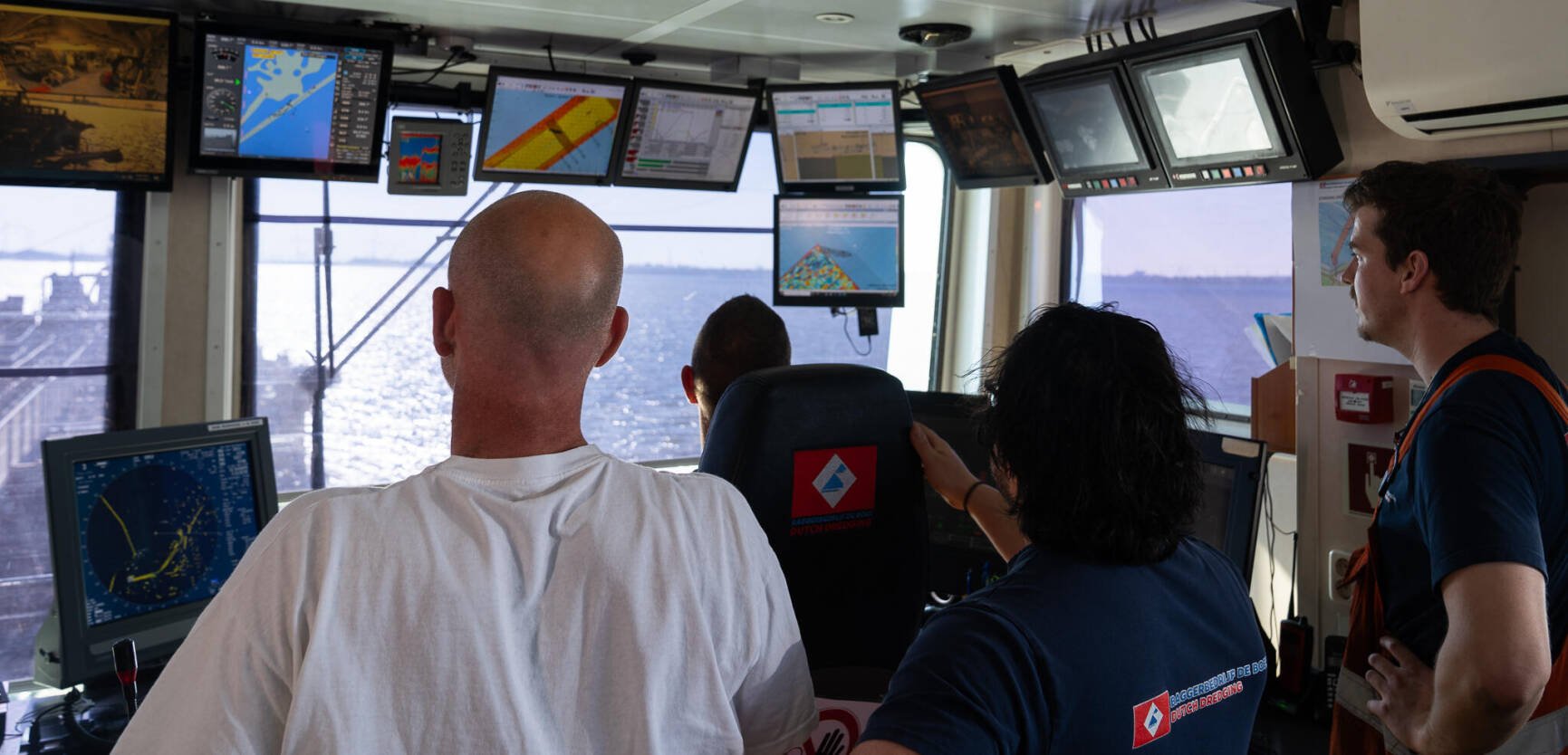
Work-life balance: missing the home front
The work-life balance is rated 6.7 on average. Many employees are used to long periods of absence, but admit that it remains difficult for their families. Informal care is almost impossible to combine with work, and poor internet connections make it difficult to stay in touch.
In addition, jet lag and long travel times result in shorter leave periods. Last-minute changes to schedules lead to frustration. According to the respondents, employers should offer more regular schedules, better internet connections and the option to work fewer hours.
Work pressure: ‘We cost a tonne a day’
The average rating for work pressure is 6. Employees under the age of 40 experience slightly less stress (5.7) than their older colleagues (6.2). Nevertheless, many see stress as an integral part of their profession. ‘We cost a tonne a day, every hour of idling costs money,’ said one of the interviewees.
Nevertheless, there are clear stress factors: poor organisation, long shifts, work-life imbalance and understaffing. A third of employees do nothing to combat stress. Those who do seek relaxation, exercise or discuss problems with managers.
When asked what employers can do, respondents often give the same answer: more appreciation and personal attention. Greater autonomy, better schedules and extra staff would also reduce the pressure.
Safety: high awareness, but rules are restrictive
Respondents gave safety a score of 7.6. Safety awareness is high: 90 per cent always wear protective equipment and 84 per cent challenge colleagues on unsafe behaviour. However, 30 per cent admit that they do not always follow all instructions.
The main bottlenecks are time pressure, fatigue, language barriers and inexperienced crew. There is also criticism of bureaucracy: ‘Too many safety rules and training courses, which means it's no longer done,’ they say.
Proposals to improve safety are concrete: more practical information, better protective equipment, and pairing experienced staff with newcomers.
Photo for illustrative purposes
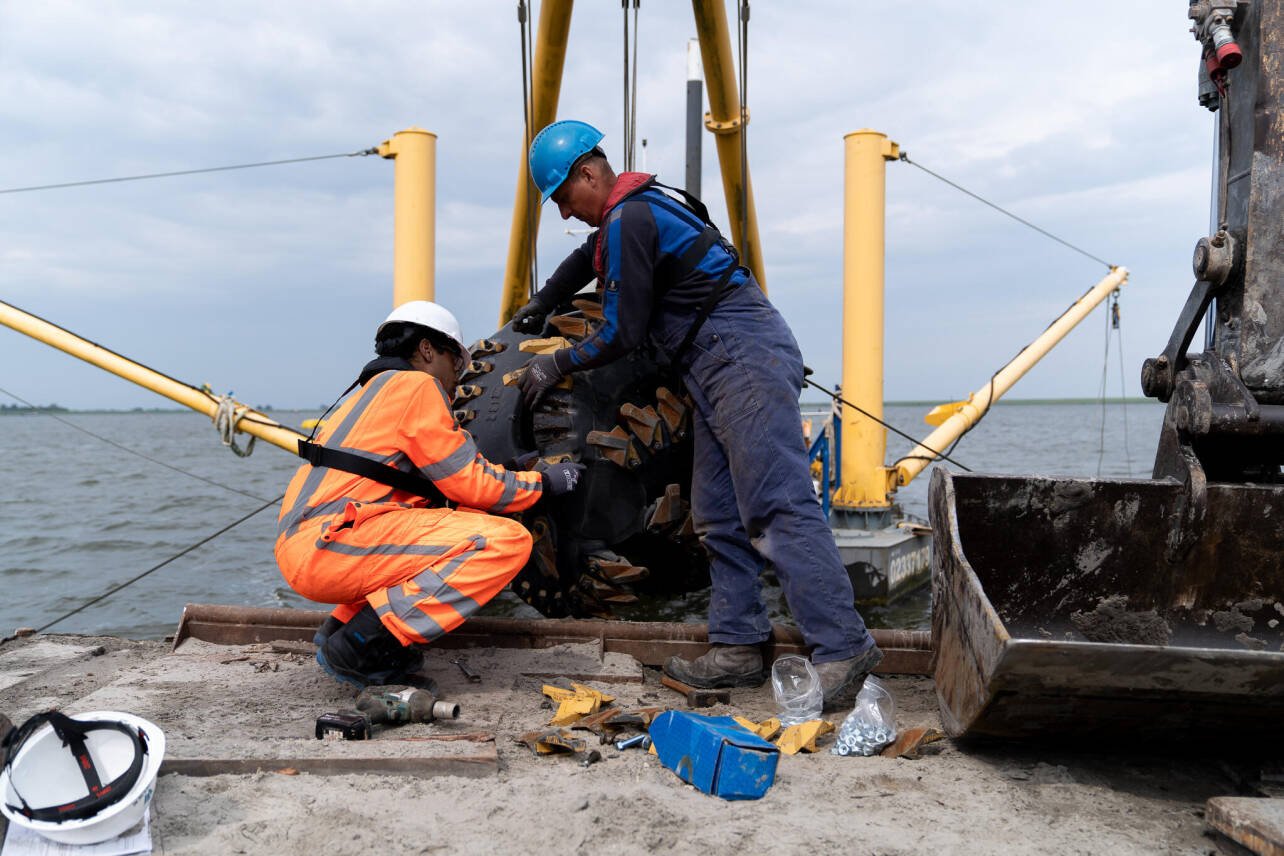
Work in hydraulic engineering is heavy, intensive and requires a strong mentality. This is evident from a recent study by the O&O Fund for Hydraulic Engineering into the physical and mental health of sailing personnel. The fund wants to support employees in reaching retirement in a healthy, motivated and competent state.
Survey among seafaring personnel
The study was conducted by a-advies and consisted of an online questionnaire and 27 interviews. A total of 83 employees started the questionnaire, 59 of whom completed it in full. The group consisted of 44 per cent engineers and 56 per cent nautical personnel such as captains, helmsmen and barge masters.
The aim was to gain insight into the bottlenecks experienced by seafarers in terms of health, safety and work pressure, and to discover what improvements they believe are necessary.
Physical health: complaints due to wear and tear
On average, hydraulic engineers rate their physical health at 7.3. Younger employees give themselves a 7.8, while their older colleagues do not exceed a 6.9. Fatigue, back problems and pain in joints and muscles are particularly mentioned.
The bottlenecks are clear: heavy lifting, long shifts, noise, night shifts, unhealthy eating habits and tiring travel. ‘You can't do this your whole life,’ says one interviewee. ‘Everyone suffers from wear and tear. If you work on a cutter your whole life, you might as well sit in a wheelchair when you retire.’
Civil engineers try to stay healthy by exercising, not smoking and eating healthier. However, many believe that employers also have a responsibility. Healthy food on board, extra days off and better travel facilities are often mentioned. The cook plays a key role in this. A suggestion that comes up regularly is to offer cooks a course in healthy cooking.

Photo for illustrative purposes
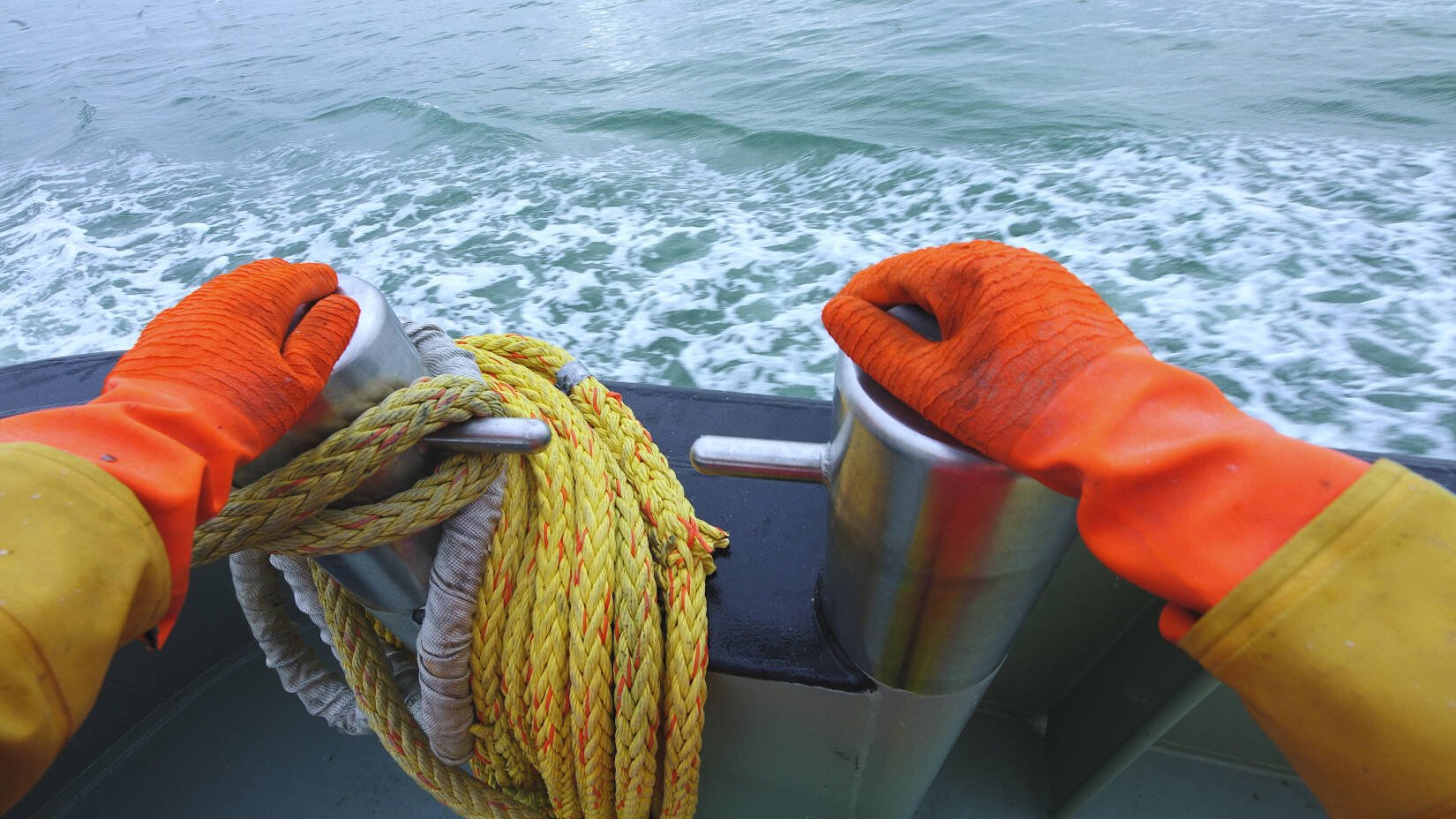
Living with one leg
On the basis of all this, the judge arrived at a distribution of liability of two-thirds for the skipper and ship owner and one-third for the crew member involved. However, on the basis of fairness, there is room for correction. The man, who was 26 at the time of the accident, has to continue living and working with one leg, which has lasting consequences, including financial ones. After adjusting for these factors, the judge ruled that the former crew member should bear 20% of the damages himself and that 80% should be borne by the skipper and the ship owner.
Serious consequences
The skipper and crew member had been working together for about six years. The action that went wrong was in itself commonplace and simple. However, this does not alter the fact that there can be serious consequences if things go wrong, and that the skipper must ensure that this does not happen. The fact that he looked behind him into the wheelhouse rather than at the crew member while sailing away means that there could not have been good communication between the two. This is also confirmed by the fact that the skipper did not hear the crew member shouting. Nor did the skipper check and ask whether the rope that had to be thrown off had actually been brought completely on board.
According to the judge, the skipper therefore failed to take a number of precautions that he should have taken. He made mistakes, the judge ruled, and therefore the fault of the ship is clear and the company, as the ship's owner, is liable. However, the crew member could also have done more himself: he could have discussed with the skipper that, in his opinion, the rope was not properly secured, or he could have taken steps to change this himself. He could also have taken up a different position on the deck, further away from the rope. According to the judge, the man had the opportunity to choose his own safety, but he failed to take advantage of it.
Photo for illustrative purposes
The court in Rotterdam. © Photo image bank Rechtspraak

In a serious accident involving a rope on board a fishing vessel, a crew member's lower leg became so trapped that it was torn off. This was due to mistakes made by the skipper, although the crew member himself was not entirely blameless. What stands out in the judgment of the Rotterdam court is that the accident could easily have been prevented.
The accident occurred when the skipper wanted to move from the Noorderhaven in Den Oever to a bunker pontoon. When casting off, the crew member became trapped in a rope that the skipper had placed on the foredeck. The skipper was in the wheelhouse when the boat departed and did not see the accident happen because he was looking aft at the time to make sure he did not hit the boat behind him. The crew member tried to alert the skipper, but he did not hear him. The entrapment was therefore irreversible and the man lost his lower leg. He then spent some time in hospital and two and a half months in a rehabilitation centre. In total, his rehabilitation took nine months.
“Rushed and careless”
The court case that was eventually brought about this accident and its aftermath mainly concerned the question of who was at fault and to what extent. Such partial dispute proceedings are intended to facilitate the settlement of personal injury claims outside the courtroom.
According to the crew member who was seriously injured, the skipper had acted in a hurried, inattentive and careless manner. His communication was also said to have been inadequate and he did not take the correct safety measures. The skipper and the ship owner gave a different account of the course of events.
According to the judge, the witness hearings, an investigation report and a photograph do not provide clarity on many aspects of this case. Nevertheless, according to the judge, two things have been established. The secured part of the rope, which was attached to the front portside bow cleat, was loosened by the crew member. And he was leaning on his left knee when the accident happened.
